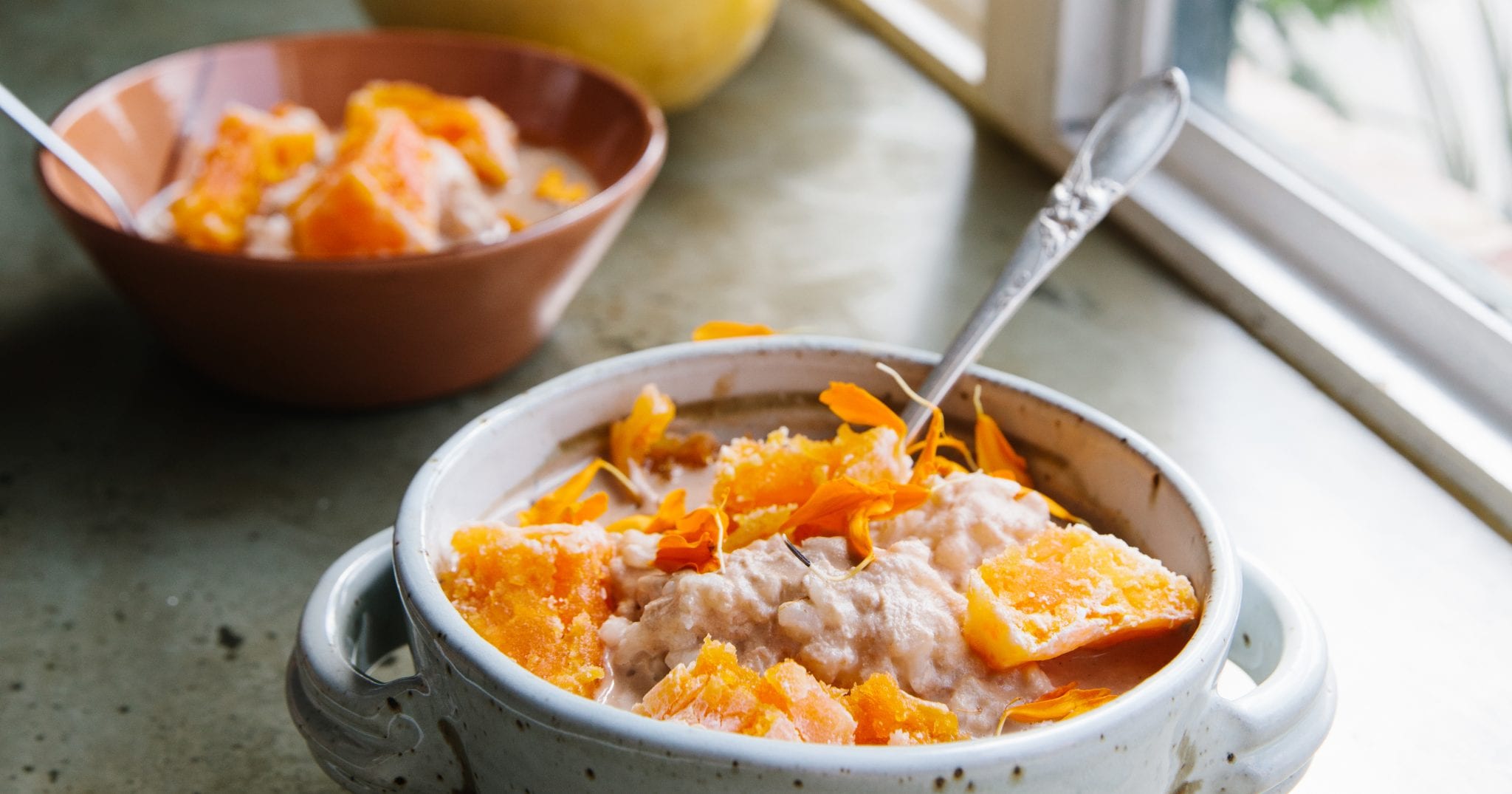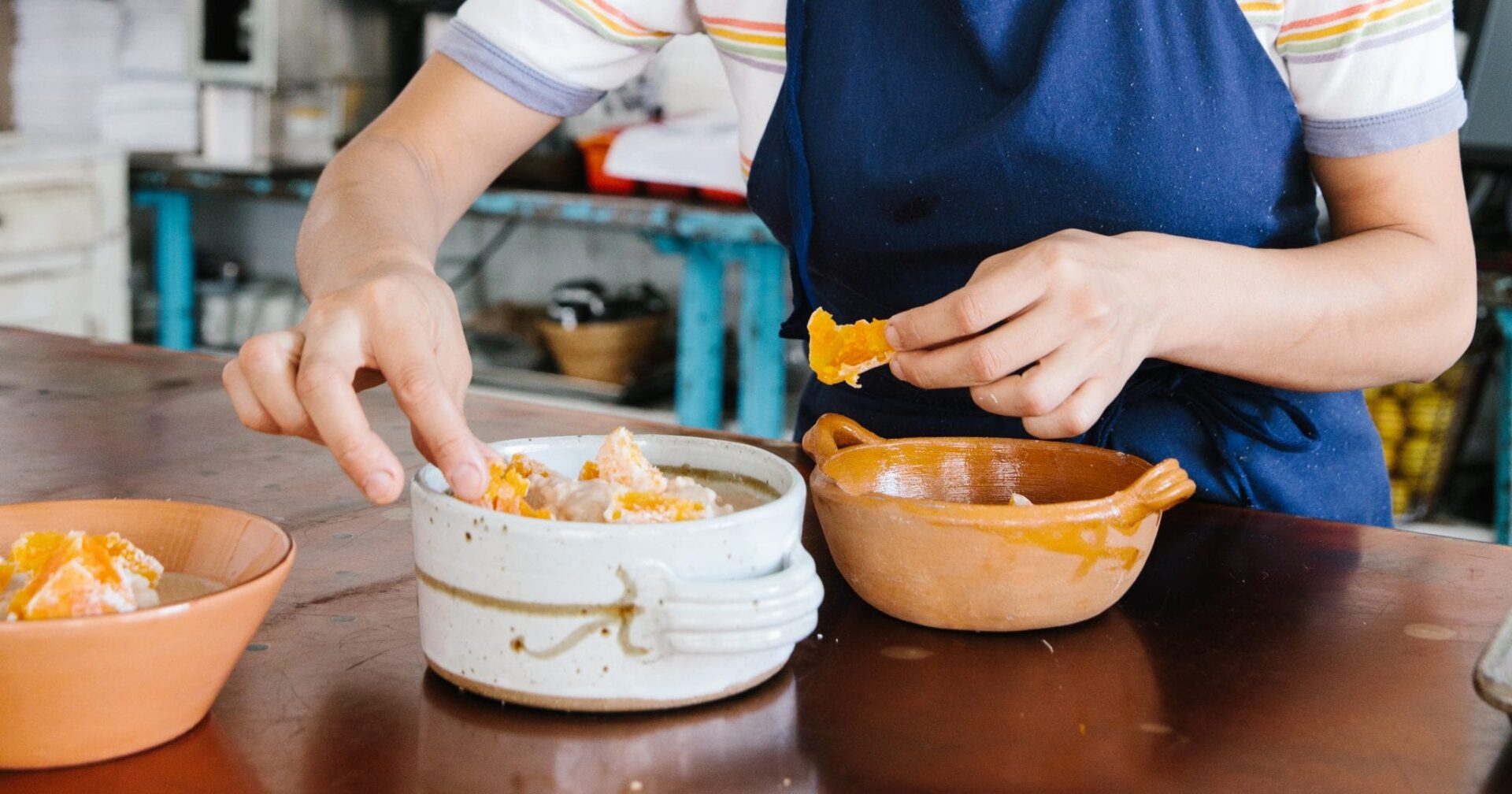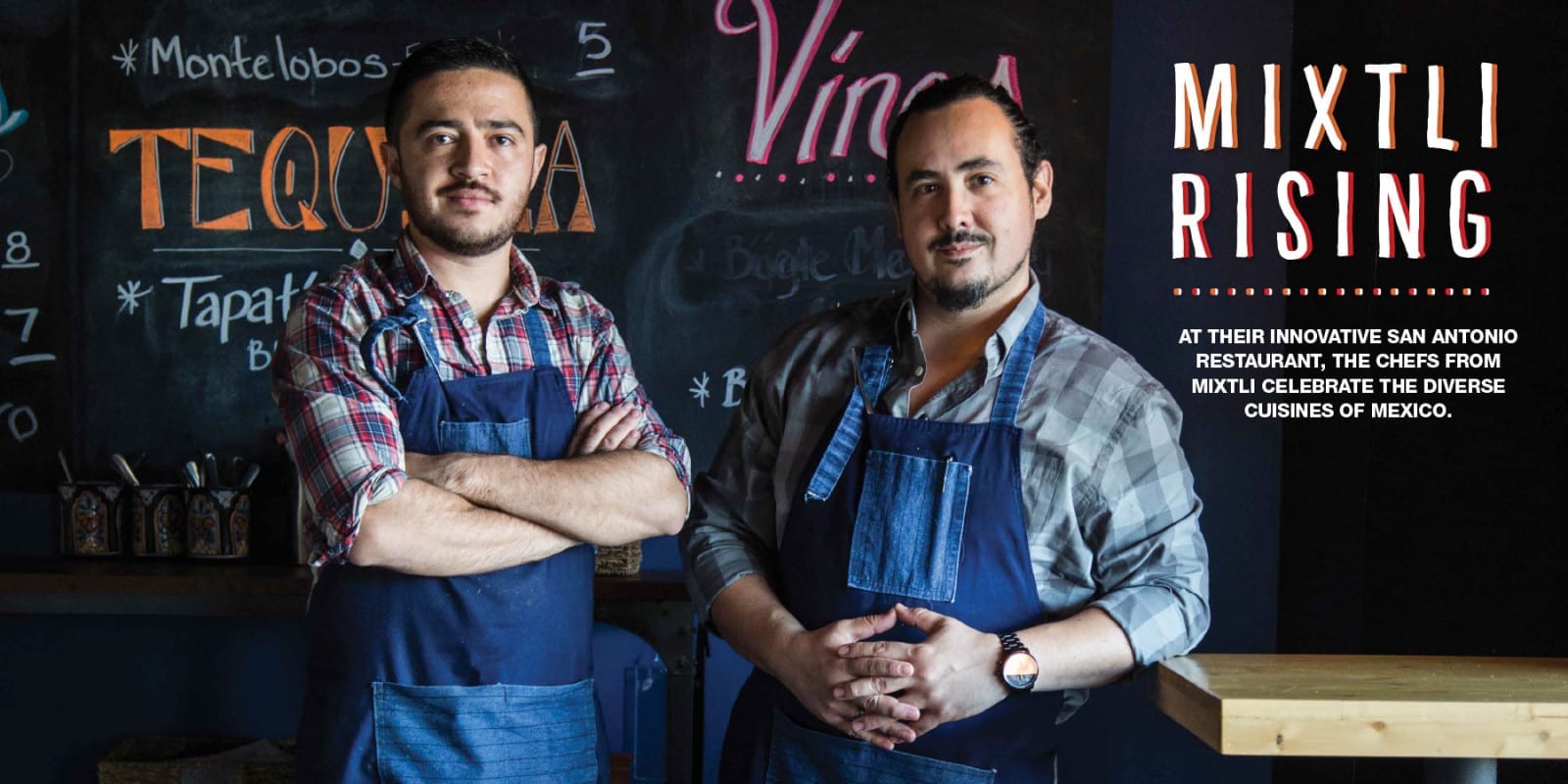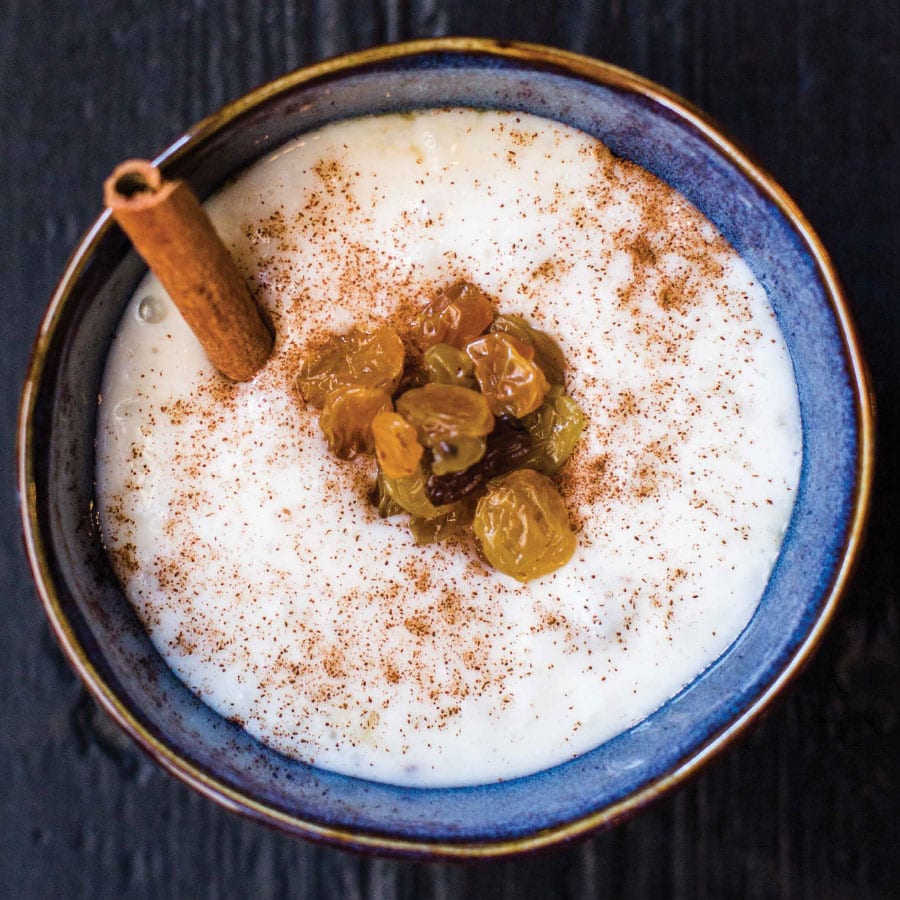yields
Serves 12
2½cups Carolina Gold rice
4 cups oat milk
2 cinnamon sticks
3 bay leaves
1 vanilla bean
For the pecan milk syrup:
4 cups pecans
2 cups boiling water
Scant 1 cup demerara sugar
Dulces de Calabeza, for serving
(recipe follows)
Makes 1½ quarts
¼ cup lime powder*
2 quarts cleaned African squash** or butternut squash, cut into medium chunks and pricked with a fork
4 piloncillo cones*** (or 8 cups demerara sugar)
For the atole:
Dulces de Calabaza
steps
- In a large pot, combine first five ingredients with 5 cups water. Bring to a rolling boil, then reduce to a simmer and cook, covered, until rice is tender and surrounded by a soupy liquid, 20 to 25 minutes.
- While rice cooks, add pecans to a small bowl and pour boiling water over top. Cover with a plate or plastic wrap and let steep 10 minutes. In a blender, process pecans and liquid until smooth—you may want to also run it through a fine mesh sieve—then transfer to a bowland whisk in sugar.
- To serve, ladle porridge into individual bowls, drizzle with pecan milk syrup, and top with candied squash.
This nixtamalized squash candy takes about a day and a half to make, but don’t be intimidated: The majority of the recipe is hands-off.
Make the Dulces de Clabaza
- In a large bowl, combine lime powder with 3 quarts water and stir to dissolve. Soak squash in lime solution for 24 hours.
- The next day, rinse squash under running water for a few minutes to wash off the lime solution. Transfer squash to a large pot and cover with water (about 3 quarts), add piloncillo or sugar, and cook over low heat for 8 to 10 hours, checking for doneness after 8 hours. The slow cooking will help prevent the squash from burning; be careful checking for doneness, as the crystalizing sugars will make it extremely hot.
*Lime powder, also called cal, quick lime, and slack lime, is widely used in Latin cooking. When mixed with water, the alkaline solution removes the cellulose hull of corn kernels in the production of masa.
**African squash is a variety unique toGeorgia. It’s been grown in the state ever since one of the founders of farmer-owned cooperative Georgia Grown brought seeds back from Zaire, where he was stationed with the Peace Corps. The drought-resistant plant took well to the local climate and produces a squash with high sugar content that grows in many shapes and sizes.
***Find these at a Mexican market









